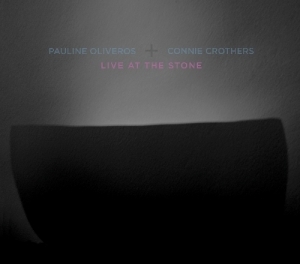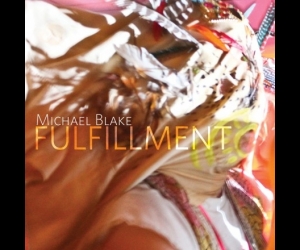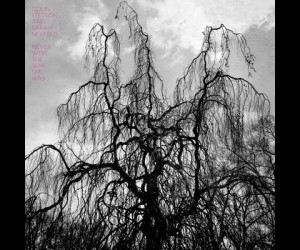
The first, last, and only musical meeting between jazz improviser Connie Crothers (1941–2016) and electronic-music icon Pauline Oliveros (1932–2016) took place in August 2014. It is preserved in its entirety on this disc. Oliveros and Crothers were probably surprised by how many musical ideas they shared. Both had an unerring sense of rhythm coupled with a mischievous sense of humour that refused to take things too seriously, plus a talent for disruption.
You note this as the two work through this single, almost forty-minute improvisation, where Crothers’ piano patterns are matched, mocked, or multiplied by Oliveros’ dexterity on V-accordion. Besides keyboard and bellows, the ultramodern squeeze-box gave her the ability to manage WAV files and playbacks so that processed interface is part of the mix. Tellingly, some of the pianist’s sweeping glissandi and chordal boosts have their antecedents in European romantic-styled sounds, plus the silences and contorted patterns of more contemporary sounds. Still, Crothers is known as the most original advocate of jazz-piano guru Lennie Tristano’s teachings, and syncopation and the blues are an organic part of her playing; note that halfway through, she injects a scrap of “Caravan” into her solo.
On the other hand, there are few, if any, antecedents to Oliveros’ musical architecture. Beginning with wavering jitters that parallel staccato pianism, her instrumental blend of locomotive-like tremolos, slide-whistle-like warbles, and synthesized vocalizing, plus a dramatic clash of basso keyboard slurs, marks the improvisation’s climatic mid-point. From then on, Crothers’ jazz-inflected key-probes and dynamic variations are almost subverted by the accordionist’s treble puffs and blurry, sometimes backwards-moving bellows quivers. United for a final intense sequence, like a trick ending to a mystery novel, the completion of the subsequent processional musical tale confirms that the musicians’ parallel paths are more cohesive and connective than initially suggested. A fitting memorial to departed talents, Live At The Stone suggests a collaboration that could have deepened and could maybe have brought in other sonic currents, had not fate intervened.


